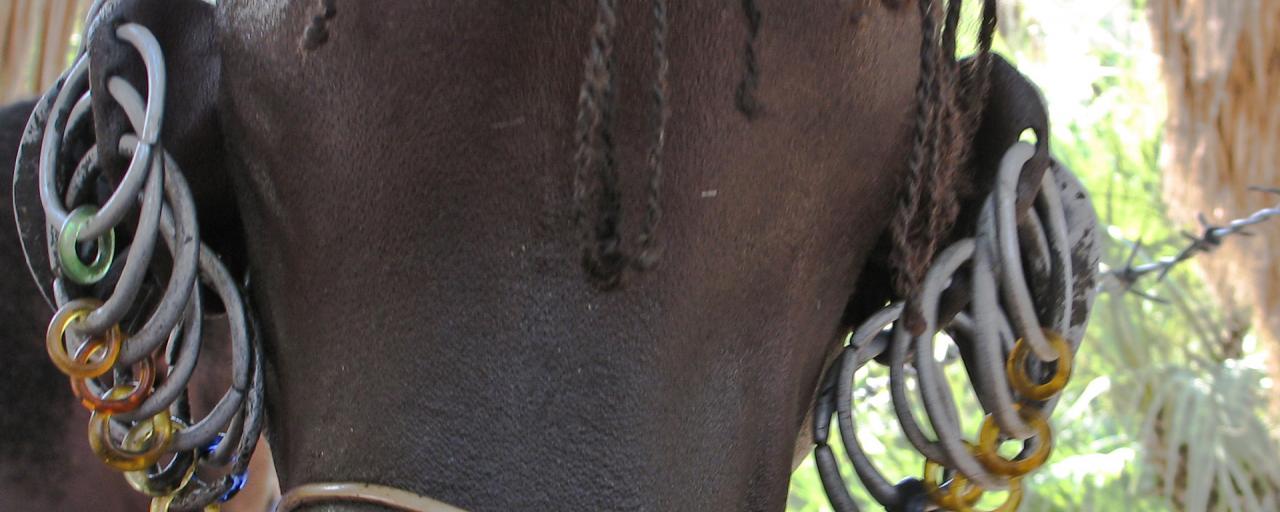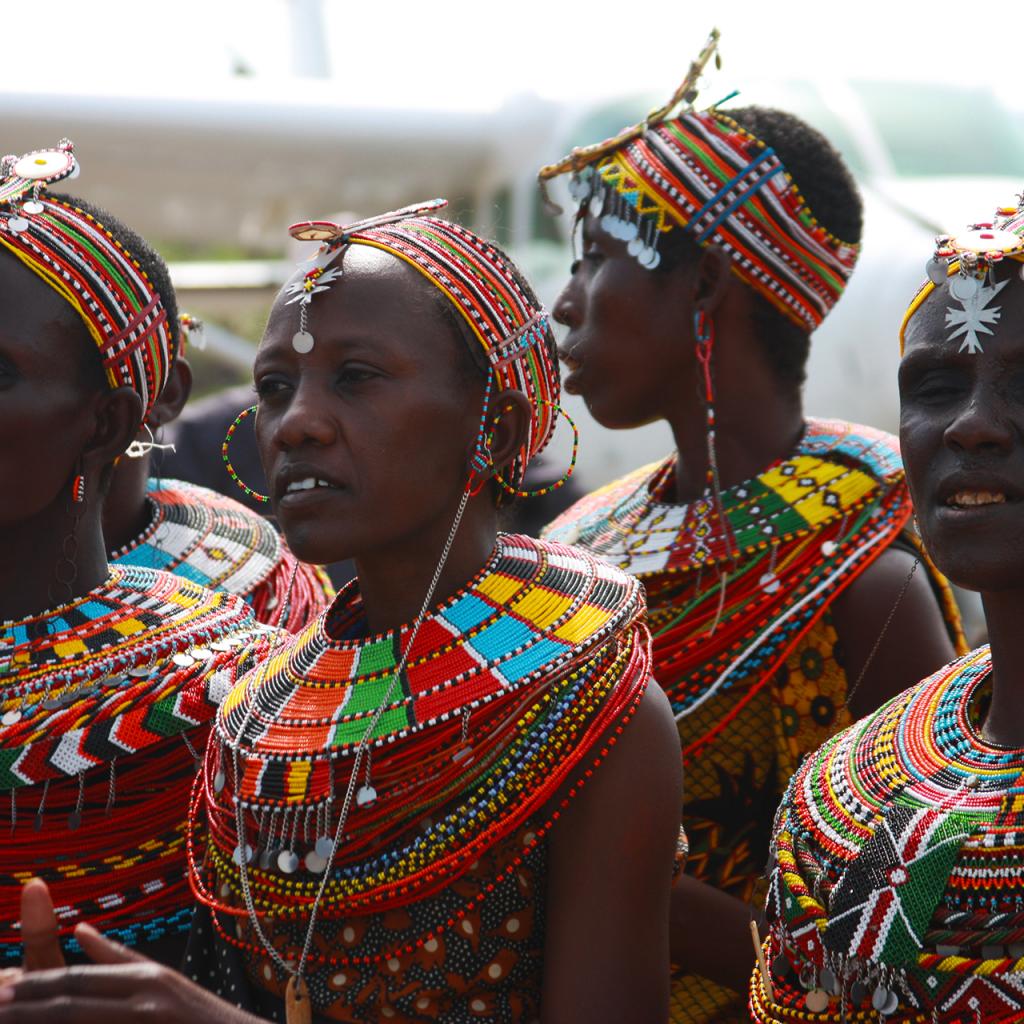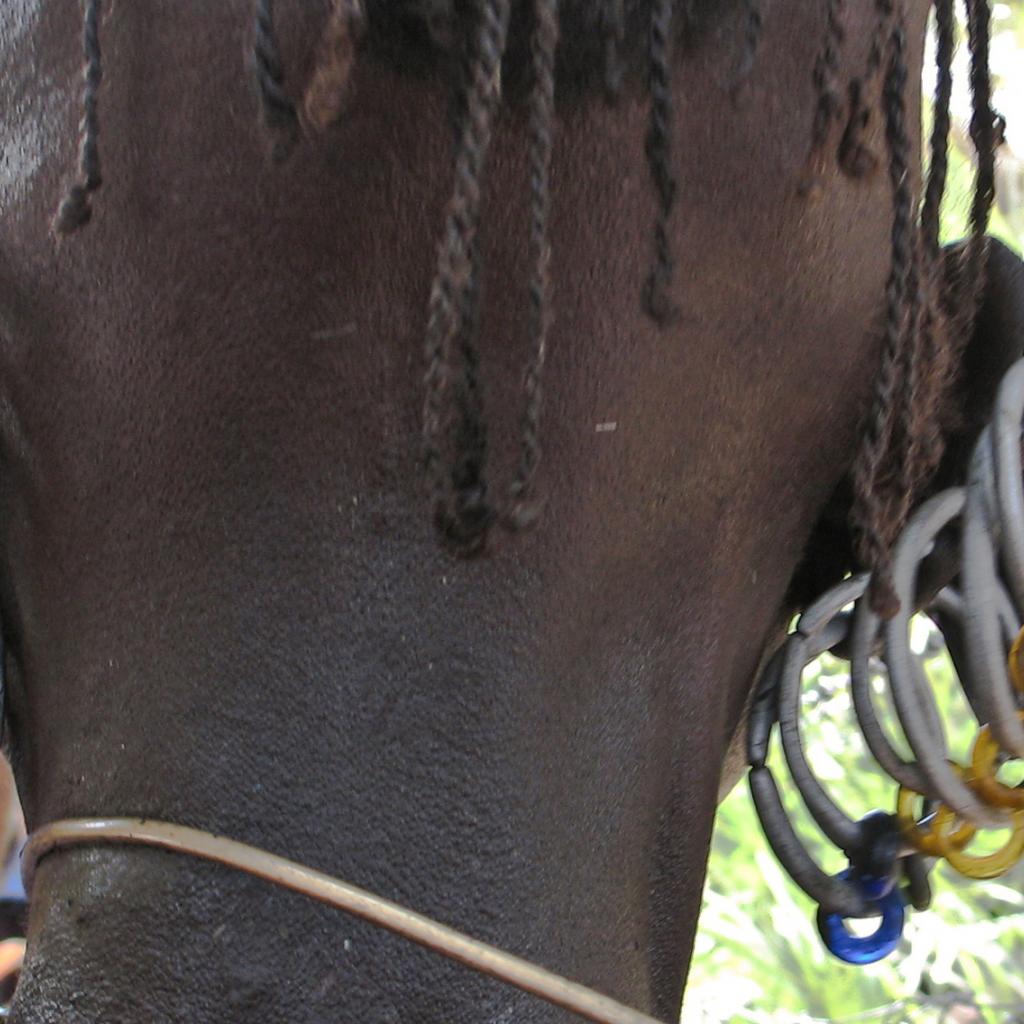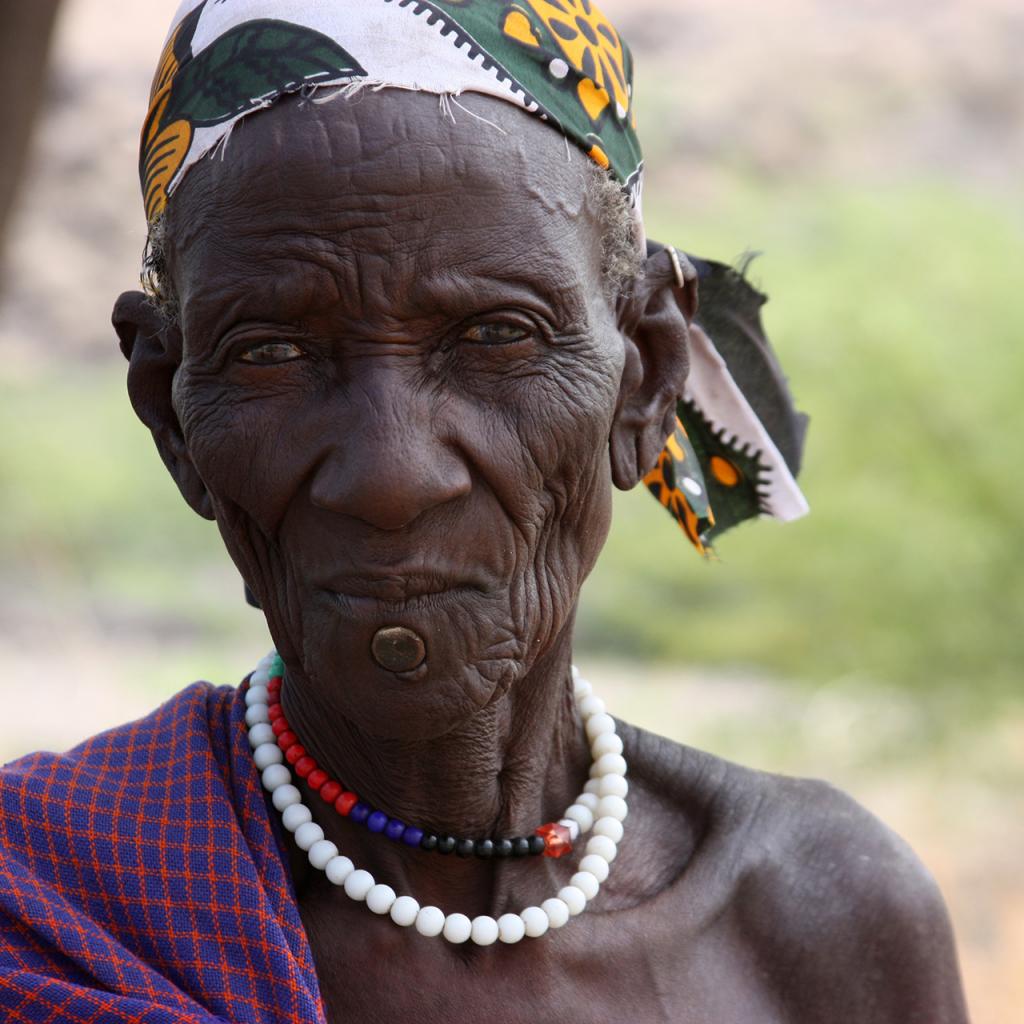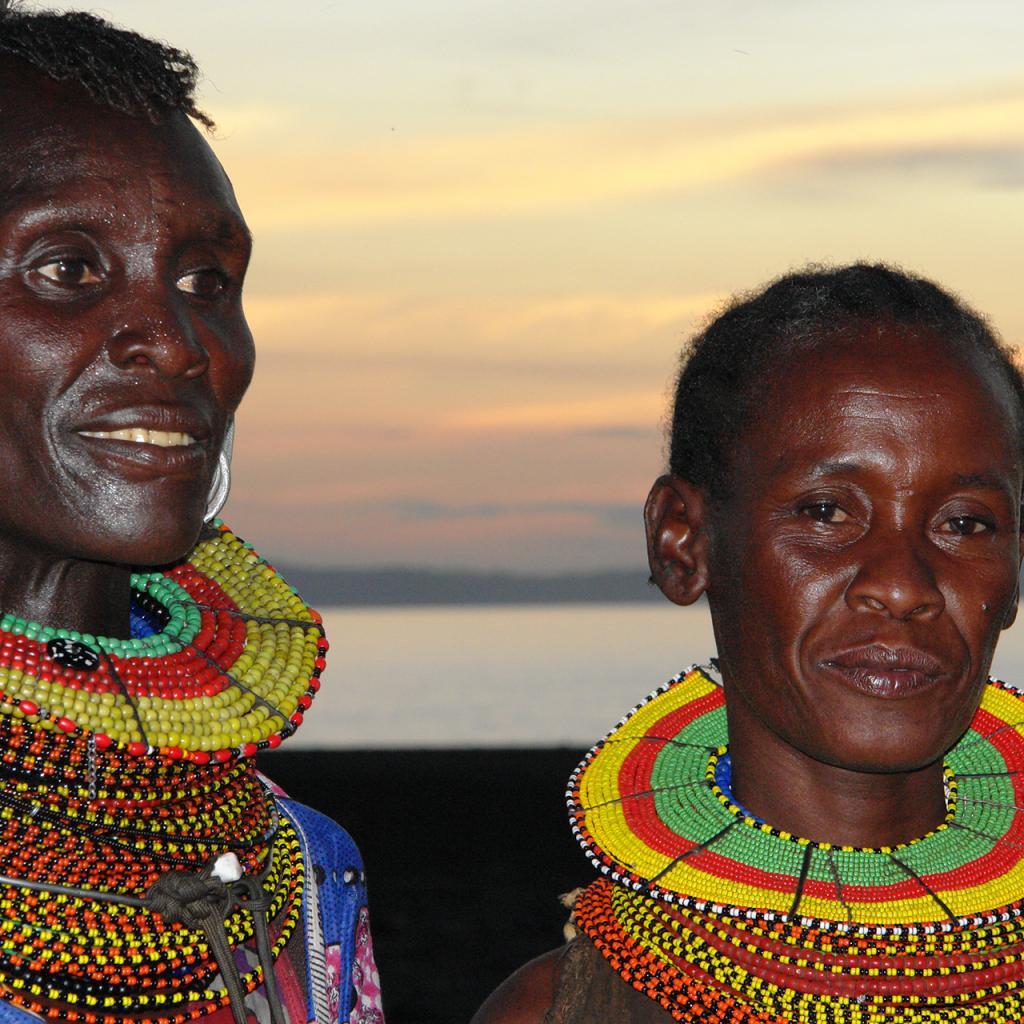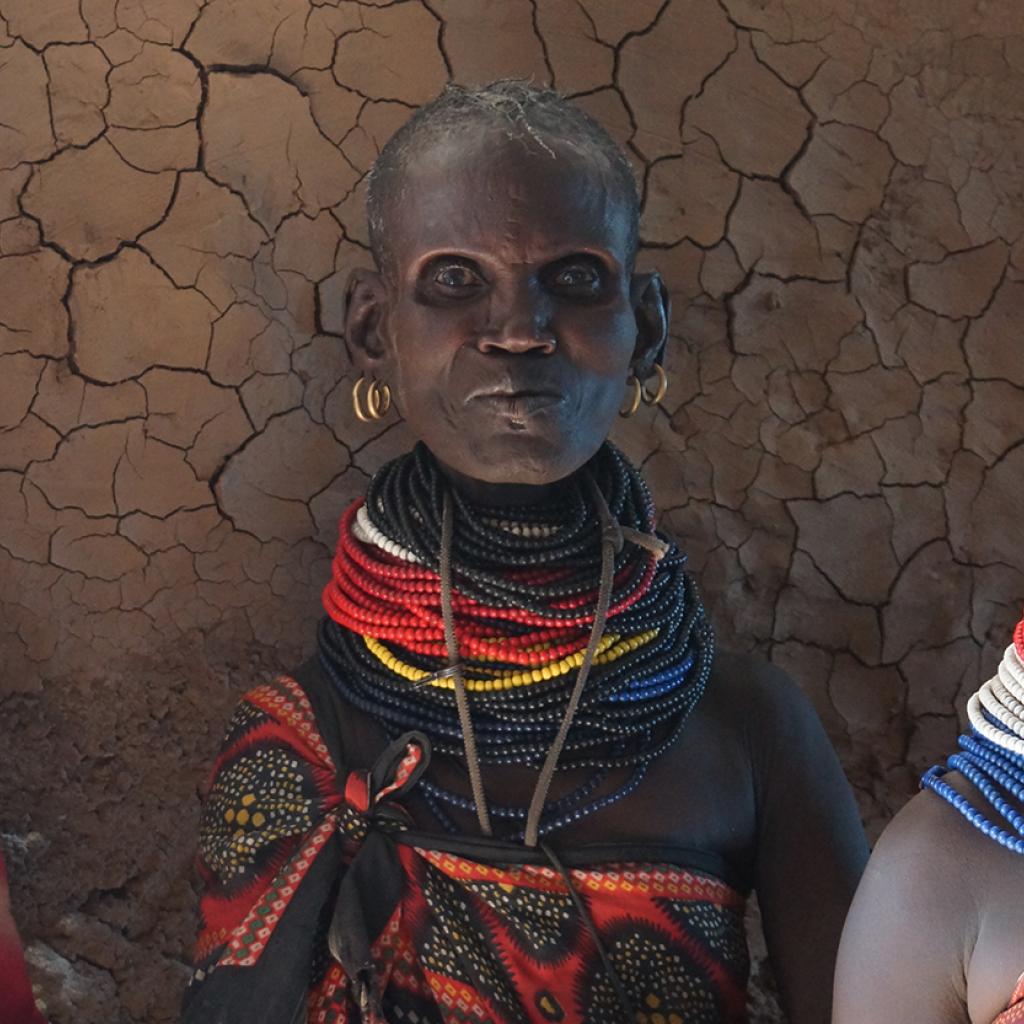The most important rituals in the Turkana society are the birth, the initiation rites, rituals and ceremonies for the wedding and the rituals related to death; all these rites take place under the supervision of the elders of the clan, both men and women, while emuron, sorcerers-diviners, play a blessing role.
All the rituals are accompanied by animal sacrifices that make happy the spirits and God, in this way they will not oppose the hallowed event.
The rites of passage, both male and female, do not include circumcision, the Turkana are among the few people who do not practice this body modification; the rite of female passage coincides with puberty, around fifteen, and this allows girls to marry.
For boys, the rite of passage to adulthood, is learning to hunt and killing an animal with a single throw of the spear, to show strength and skill; if they succeed in this endeavor, the elderly dismember the animal and smear the contents of the stomach and intestines on the young body in sign of blessing.
At that point the boy, smeared with excrements and entrails, becomes a true warrior and receives gifts that consist in a long spear with a short blade, a small rectangular shield of giraffe or buffalo skin, a headrest, a wrist knife and one or two knives and some finger rings particularly useful in hand combats.
For the Turkana ostrich feathers are a sign of maturity, they are extremely expensive, as much as a goat, and are used in the elaborate hairstyles that mark the end of the rite of passage.
For girls, the most important step is the marriage that should be between the members of the clan or the mother's clan in order to strengthen the relations and social alliances.
The Turkana are an ethnic group that practices polygamy a lot, in fact, they say that a man must have at least two women and consider a man with only one wife as a man with one leg.
In order to marry, a man must possess a great wealth in terms of cattle, after obtaining the consent of the girl he must also obtain the approval of the future bride's family.
Once obtained the approval of the father of the bride the definition of the "marriage contract" begins, where the price is established and, in a livestock-based society such as the Turkana, it is obviously expressed in head of cattle.
The definition takes place during numerous meetings where they negotiate and on these occasions the groom should always show up with gifts that can be tobacco, tea leaves, clothes or blankets.
Once reached an agreement on the price to be paid, usually around 50 heads of cattle and camels and 100 sheep, the ceremony starts beginning with the consensual "kidnapping" of the bride, who must cry and wriggle to demonstrate attachment to her parents, the marriage is then blessed by the elders and celebrated by sacrificing an ox.
During the wedding ceremony, the bride is free from all the countless necklaces that she has accumulated up to that point, and that usually can weigh up to 10 kg, and wears the new series brought as a gift by her husband.
Death is another important moment and it is celebrated with appropriate rituals during which the eldest son puts a piece of butter in the mouth of the dead person by saying a formula of blessing while the widow abandons colored jewelry and starts wearing only white necklaces.
In the past, the dead were often left to be devoured by hyenas and vultures, only the most important people, emuron and the diviners were buried where they lived, the hut was later abandoned or destroyed.
Now all the Turkana dead are buried in accordance with the laws of Kenya.
Life, tradition and culture of Turkana people
- Turkana clothing and jewels
- Turkana rituals and ceremonies
- Turkana body care and modification
- Turkana religion
- Turkana society and the importance of breeding


